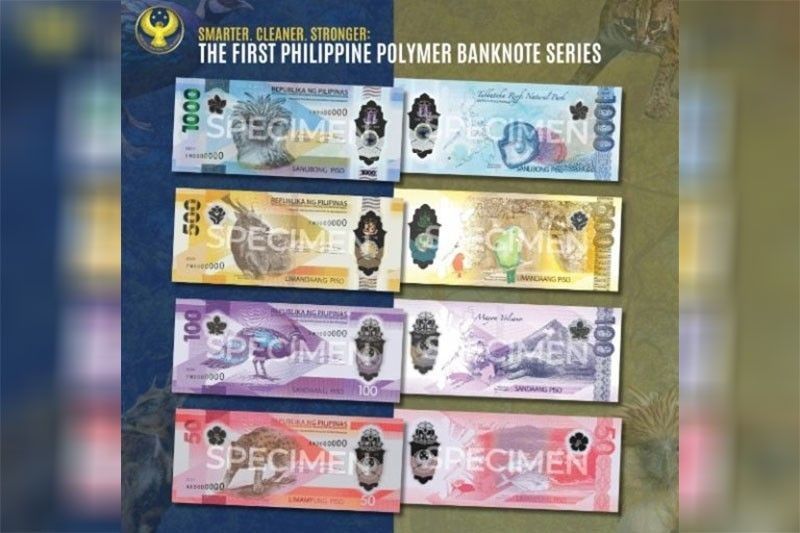BSP: Polymer bills lead to drop in counterfeits

MANILA, Philippines — The Bangko Sentral ng Pilipinas (BSP) reported a significant decrease in counterfeit banknotes since the introduction of polymer currency, with only one fake P1,000 polymer note detected per 82 million pieces in circulation.
This compares to the one per 19,000 counterfeit rate recorded for the older paper-based notes.
In a statement yesterday, the BSP said it collected data based on the P1,000 polymer notes launched in April 2022.
The key findings show that documented counterfeits of the P1000 polymer banknote were only one per 82 million pieces. This means that there were 10 counterfeits out of 825.4 million in circulation from 2022 to November 2024.
“Moreover, these counterfeits were of low quality, as their elements poorly matched the advanced security features of polymer banknotes,” the BSP said.
In contrast, documented counterfeits of the P1000 paper currency stood at one per 19,000 pieces. There were 98,316 counterfeits found out of 1.86 billion in circulation, reflecting the vulnerability of traditional materials to forgery.
According to the BSP, polymer banknotes incorporate advanced security features such as flora clear window, vertical clear window, embossed mirrored denomination and iridescent figure, among others, which reduce the risk of counterfeiting.
In a separate study conducted by De La Salle University’s Center for Engineering and Sustainable Development Research in 2023 and commissioned by the BSP, the global warming potential (GWP) of the P1000 polymer banknote is 38.36 percent lower than that of its paper counterpart.
“The lower GWP is attributed to the longer lifespan of polymer banknotes, which reduces the consumption of resources, such as electricity, throughout their life cycle,” the BSP said.
The findings were in line with studies conducted by other central banks – the Bank of England, the Bank of Canada and Banco de Mexico.
The Department of Health also reviewed evidence from data collected during the COVID-19 pandemic, confirming that polymer banknotes are resistant to damage and dirt caused by water, oil and grime.
Meanwhile, BSP research shows that polymer banknotes can last for as long as 7.5 years compared to 1.5 years for paper banknotes.
The central bank also said that it receives fewer worn-out polymer banknotes compared with paper banknotes. From 2022 to November 2024, only 0.08 percent or 689,571 pieces of P1000 polymer notes issued were returned as worn-out or damaged, significantly cutting replacement costs.
By contrast, 54.4 percent or about one billion pieces of the P1000 paper notes issued during the same period were returned in poor condition.
- Latest
- Trending































